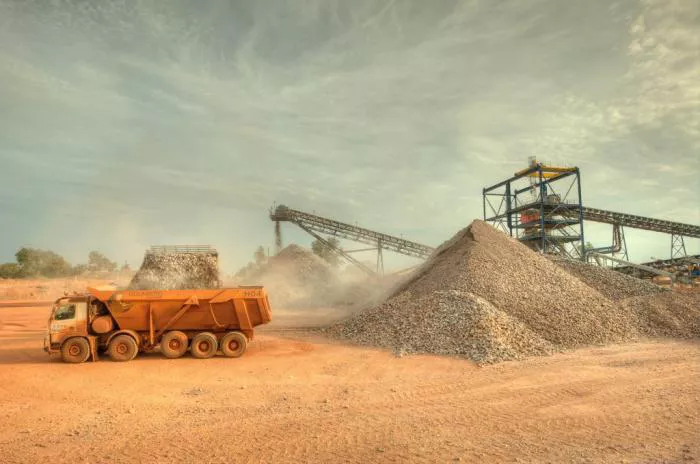Toubani Resources has released an impressive Definitive Feasibility Study (DFS) for its Kobada gold project in Mali, projecting significant financial returns over its nine-year operational lifespan. The company anticipates a post-tax net present value (NPV) of approximately US$635 million, with total pre-tax cash flows estimated at US$1.499 billion.
This study indicates that the project can produce gold at an all-in sustaining cost of US$1,004 per ounce, a competitive figure compared to the current market price of US$2,783 per ounce. The capital expenditure (CAPEX) is expected to be around US$216 million, which Toubani plans to recover through project operations within just 1.5 years. The internal rate of return (IRR) post-tax stands at an impressive 58%.
Robust Production Forecasts
The Kobada gold project is set to yield a total of 1,494,000 ounces of gold, with an average annual production rate of 162,000 ounces. This positions Toubani among a select group of gold producers in West Africa capable of generating over 150,000 ounces annually. Given the upward trend in gold prices amid global uncertainties, the DFS models a gold price of US$2,200 per ounce, significantly below the current market rate of US$2,787 (approximately A$4,243).
Moreover, Toubani notes that if a more conservative gold price of US$2,600 per ounce is considered, the post-tax NPV would rise to US$897 million, further illustrating the project’s financial viability.
Resource Richness and Exploration Potential
The Kobada gold deposit is characterized by a large-scale, shallow, open-pittable gold zone, primarily composed of oxide materials that extend over 5 kilometers. Within this zone, Toubani has identified a total indicated and inferred gold resource of 78 million tonnes at an average grade of 0.88 grams per tonne (g/t), translating to a total of 2.2 million ounces of gold over a strike distance of approximately 4.5 kilometers.
Of this, 1.99 million ounces belong to the indicated category, making up 90% of the total mineral resource. The inferred category primarily extends over the remaining 500 meters at the southwestern edge of the resource envelope. Only a minor portion of this inferred material is included in the DFS envelope, conservatively categorized as waste for modeling purposes.
The study identifies 53.8 million tonnes of ore reserves, all classified within the probable category, with a grade of 0.9 g/t, equating to a total of 1.56 million ounces of gold. This represents a substantial conversion rate of 71% from the total mineral resource and approximately 78% from the indicated resource.
Future Growth and Expansion Plans
Toubani has indicated that mineralization remains open beyond the known strike limits and at depth. The company plans to conduct deeper drilling in the future to explore potential resource extensions and expansions.
The oxidation base lies approximately 200 meters below the surface at its maximum depth, particularly in the Stage-2 pit. The proposed mining operation will consist of five nested open-pits, which correspond to different mining stages. Notably, four of these stages are accessible at the surface and are characterized by low strip ratios. The overall waste-to-ore strip ratio stands at 3:1, ranking Kobada third among similar West African development projects. The initial Stage-1 pit features a notably low strip ratio of 1.8:1.
Operational Efficiency and Processing Capabilities
The DFS estimates an average total material movement of 22.8 million tonnes per year, peaking at 30 million tonnes, resulting in a total of 216.2 million tonnes of material moved throughout the project’s lifespan. The initial six years of mining will focus exclusively on extracting oxide ore, with grades starting at approximately 1.01 g/t gold in Year 1 and averaging better than 0.8 g/t in subsequent years, before rising to 1.05 g/t in Year 7.
Only a small proportion of fresh ore is expected to be mined during the final three years of the project, from Year 7 to Year 9, coinciding with a gradual decrease in grade to 0.79 g/t gold in Year 9.
Kobada’s processing strategy includes a straightforward flowsheet that utilizes conventional upfront gravity gold separation, followed by a carbon-in-cyanide leach adsorption and electrowinning circuit. Toubani reports that it can achieve recovery rates of around 96% using predominantly free-milling oxide materials.
Advantages of the Kobada Gold Project
Despite its relatively modest grade, the Kobada project possesses several key advantages that position it as a high-margin mining operation. Its simple processing circuit is complemented by a predominance of soft-rock, free-dig, and free-milling ore. The project’s near-surface, bulk-mineable nature, combined with a low strip ratio, further enhances its economic appeal.
Toubani emphasizes that this is just the beginning, with the initial mine life projected at nine years. The company is optimistic about the potential for further growth and exploration opportunities at the Kobada site.
Conclusion
Toubani Resources’ Kobada gold project presents a promising opportunity for investors and stakeholders. With its robust financial projections, significant resource base, and favorable market conditions, the project is set to make a substantial impact on the gold mining sector in West Africa. As Toubani moves forward with its plans for exploration and development, it remains poised to capitalize on the increasing demand for gold amid global economic uncertainties.
Related topics:

